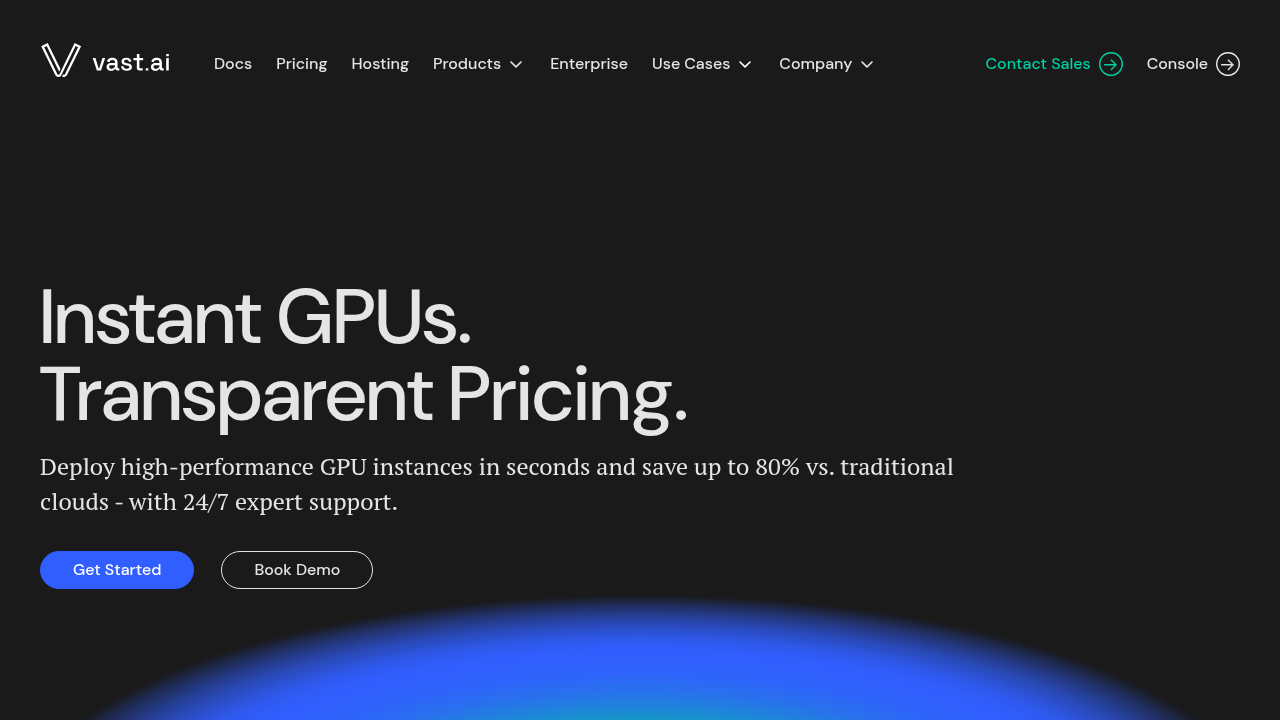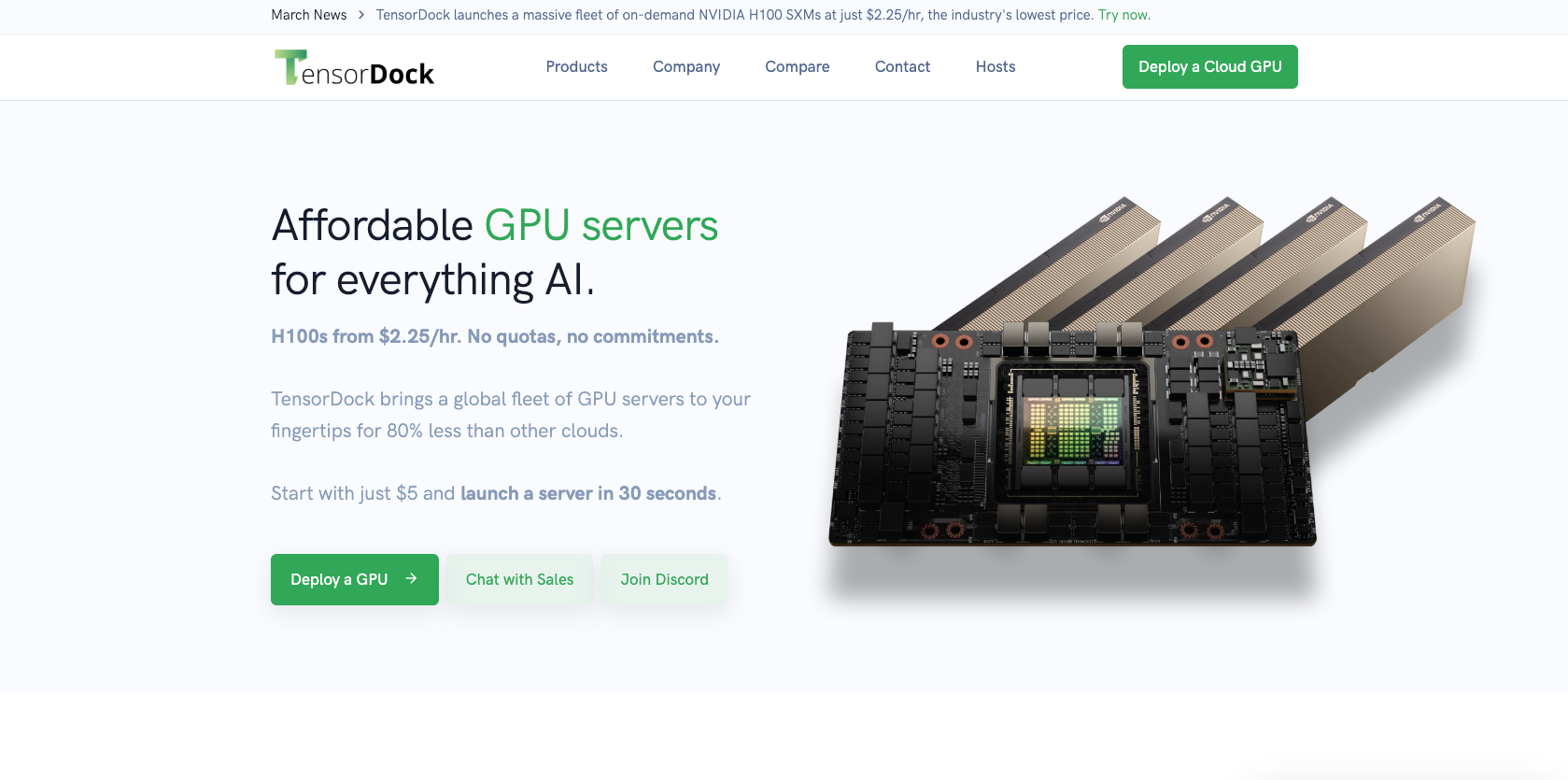Best GPU Providers for Natural Language Processing Training in November 2025

Most chatbot development and language model work happens on rented GPUs now, but the provider you pick makes a huge difference in how much you spend and whether your training runs finish without interruptions. We compared the major GPU service providers options on price, reliability, and how fast you can actually start working. The results surprised us, especially when we looked at total cost instead of just the hourly rate.
TLDR:
Training transformers on A100-80GB GPUs costs $0.78/hr with Thunder Compute vs $2.50/hr+ elsewhere
VS Code integration launches GPU instances in seconds without SSH setup or driver installation
Persistent storage and snapshots preserve datasets and model checkpoints across training sessions
Thunder Compute delivers 80% cost savings with one-click deployment for chatbot and language model work
What are GPU providers for natural language processing?
AI workloads, for computing like NLP, require a different kind of cloud computing. Regular CPUs can't provide the kind of parallel processing needed for the large data sets involved with NLP and other AI activities. GPUs, on the other hand, handle AI workloads differently than traditional cloud computing. They're built to process large text datasets and train neural networks for conversational AI, text generation, and language understanding systems. The architecture supports massive parallel processing needed for training language models, fine-tuning transformers, and building chatbots.
And, they operate differently than regular cloud providers as well. GPU cloud providers rent computing power by the hour, giving you access to high-end graphics processors without purchasing physical hardware. You can spin up servers with NVIDIA A100s or H100s that cost tens of thousands of dollars to own, paying only for actual usage time.
How we ranked GPU providers for NLP
We assessed providers on five factors that directly impact language model training and fine-tuning:
Cost per GPU hour. This came first, since extended training runs accumulate expenses rapidly.
GPU memory capacity. This ranked second because transformer architectures need sufficient VRAM to hold model weights and process batches without swapping to system memory.
Network throughput. This is the third consideration. Multi-GPU training depends on fast interconnects to synchronize gradients without creating bottlenecks.
Setup speed. This was the fourth consideration for which we measured how quickly you can spin up instances with PyTorch or TensorFlow already configured.
Available GPUs. We favored providers offering H100 and A100 GPUs. These chips provide the memory bandwidth and compute density that chatbot development and transformer training demand.
Finally, we favored services with transparent pricing, minimal setup friction, and interfaces built for ML engineers.
Best Overall GPU Provider for NLP: Thunder Compute
Thunder Compute offers A100-80GB instances at $0.78 per hour, 80% less than AWS. The pricing structure supports extended training runs for transformer models and chatbot development without budget constraints typical of traditional cloud providers. Key features include:
Direct development environment access. One-click deployment connects to VS Code for immediate GPU access. The setup eliminates SSH configuration and driver installation steps. Persistent storage maintains datasets and model checkpoints across sessions, while snapshots preserve complete environments before configuration changes.
Flexible hardware configuration. Live instance hardware swapping allows transitions from T4 prototyping to A100-80GB training without environment rebuilds. CPU and memory specifications adjust independently to match preprocessing pipeline requirements for tokenization and data loading operations.
Custom workflow support. Full VM control accommodates any framework or library required for text processing tasks. Install custom tokenizers, test quantization methods, or build multi-stage pipelines combining data preprocessing with model inference on the same instance.
Vast.ai

Vast.ai connects users with GPU owners through a decentralized marketplace using real-time bidding. The peer-to-peer network claims to offer 5-6x savings compared to standard cloud compute through auction pricing. Key features include:
The service supports both GUI and CLI interfaces for browsing available hardware.
GPU options range from consumer-grade cards to enterprise machines, with certified data center hardware available for compliance requirements.
The downsides? Unexpected terminations disrupt multi-hour training runs, forcing checkpoint restarts that delay project timelines for transformer training or chatbot development requiring consistent compute. The bidding model also creates interruptible instances that impact reliability, which is why many developers look for Vast.ai alternatives.
The bottom line: use vast.ai when cost is of the utmost concern. Given the downgraded reliability, it's best to use this service for testing and development, not production.
Lambda Labs

Lambda Labs offers H100 and H200 GPU instances with preconfigured deep learning environments. Key features include:
The service includes common ML frameworks pre-installed
Multi-GPU configurations for distributed training.
The downsides? The pricing model targets enterprise teams not individual developers or budget-focused projects. For those seeking lambda labs alternatives, more cost-effective options exist.
The bottom line: Teams that need managed infrastructure with support options will find Lambda Labs suitable for language model development and chatbot systems, though costs run higher than self-service GPU cloud providers.
RunPod

RunPod offers per-second billing that cuts costs during idle periods, with containerized Pods or VMs launching in seconds. The service provides access to consumer RTX 4090s through datacenter H100s. Key features include:
GPU selection and templates. Hub templates ship with pre-configured PyTorch and TensorFlow environments that reduce setup time for text processing work.
Serverless GPU. This option handles inference at $0.22 per hour after recent price cuts, fitting chatbot deployments that need variable compute without always-on instances.
The downsides? Network volumes require separate payment beyond base GPU rates, raising total costs for training runs that move large text datasets or save frequent checkpoints.
The bottom line: designed more for teams looking to test with smaller datasets.
Nebius

Nebius offers GPU compute with InfiniBand networking for multi-node distributed training. The infrastructure Key features include:
Able to handle enterprise workloads that need coordinated clusters and automated scaling across multiple machines.
Automation features manage complex orchestration for distributed transformer training across interconnected nodes.
The downsides? Setup complexity creates friction for individual developers and small teams. The enterprise-focused architecture requires dedicated DevOps resources to manage configurations, making it impractical for rapid prototyping or straightforward language model fine-tuning. Most text processing projects and chatbot development don't need multi-node coordination that justifies this operational overhead.
The bottom line: the service works best for organizations running large-scale deployments with dedicated infrastructure teams.
TensorDock

TensorDock runs a marketplace with H100 SXM5 instances starting at $2.25 per hour and RTX 4090s from $0.35 hourly. The on-demand model removes spending caps and quota restrictions. Key features include:
The service provides immediate GPU access across consumer and enterprise hardware without approval queues.
A 99.99% uptime standard covers their global network.
The downsides? TensorDock lacks integrated development tools for language model workflows. No native IDE connections, limited environment templates, and basic instance management require manual configuration. Teams building chatbots or training transformers spend more time on infrastructure setup than model development.
The bottom line: this is more suited to teams with heavy infrastructure skills, capable of setting up and managing the complexity of this service.
Feature Comparison Table of GPU Providers for NLP
The table below compares core features across major GPU cloud providers for language model training and text processing workloads. Pricing reflects standard on-demand rates for A100-80GB instances.
Features like VS Code integration matter because they reduce time spent on infrastructure management during transformer training cycles.
Why Thunder Compute is the best GPU provider for NLP
Thunder Compute offers $0.78/hour A100-80GB pricing that removes budget constraints during transformer training. This lets teams experiment with different architectures and hyperparameters without cost limitations.
Unlike marketplace providers such as Vast.ai, you get consistent uptime without interruptions that corrupt training runs. Unlike enterprise-focused services like Lambda Labs or Nebius, you can launch instances through VS Code in seconds without complex orchestration layers.
Language model development requires constant iteration across tokenization strategies, batch sizes, model architectures, and checkpoint fine-tuning. Infrastructure with manual setup or premium pricing for basic features slows this cycle. Thunder Compute removes these friction points so teams focus on model performance instead of server management.
FAQ
What GPU memory do I need for training transformer models?
Most transformer fine-tuning tasks require at least 40GB VRAM for models with 7-13B parameters, while 80GB A100s handle larger architectures up to 70B parameters with proper batch sizing and gradient accumulation.
How do I reduce costs during long language model training runs?
Choose providers with stop/start capabilities and persistent storage so you can pause instances during idle periods while preserving your environment, datasets, and checkpoints without paying for unused compute time.
When should I use multi-GPU instances for NLP workloads?
Multi-GPU setups benefit distributed training of models above 13B parameters or when you need faster iteration cycles, but single-GPU instances handle most fine-tuning tasks and chatbot development more cost-effectively.
Can I switch GPU types mid-project without losing my work?
Some providers let you change hardware specifications while keeping your environment intact, allowing you to prototype on smaller GPUs like T4s and scale up to A100s for full training runs without reconfiguring your setup.
What's the difference between marketplace and managed GPU providers?
Marketplace providers offer lower prices through peer-to-peer hardware but risk unexpected interruptions, while managed providers deliver consistent uptime and support at higher rates. Choose based on whether your training runs can tolerate restarts.
Final thoughts on finding the right GPU service for your models
Transformer training requires compute that stays reliable without breaking your budget on extended runs. You need a service that launches quickly and maintains uptime through multi-hour training sessions. Choose infrastructure that removes friction instead of adding configuration overhead to your workflow.